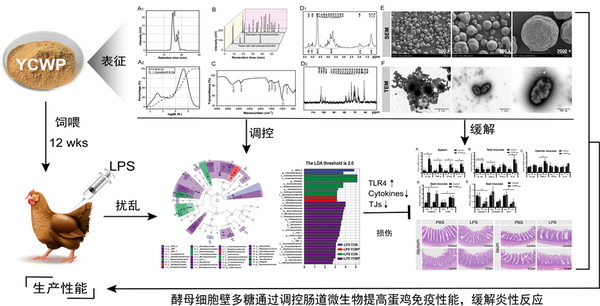The Modulatory Mechanism of Yeast Cell-wall Polysaccharides on the Innate Immunity and Anti-inflammatory Response in Laying Hens
Recently, the mechanism of yeast cell-wall polysaccharides (YCWP) modulating the innate immunity and anti-inflammatory response in laying hens was revealed by Poultry Feed Innovation Research Team of the Institute of Feed Research of Chinese Academy of Agricultural Sciences (CAAS). It provides a new perspective and theoretical support for improving the environmental adaptability and health of poultry. The results were published on International Journal of Biological Macromolecules.
In modern poultry production practices, laying hens are often confronted with multiple challenges, immunological stress, inadequate housing conditions, pathogen infection and so on. These stressors often distort the immune systems and destabilize the physiological response of birds, thereby increasing the risk of immunosuppressive diseases and secondary infections, further compromising performance and products quality. Previous researches demonstrated the efficacy of yeast cell-wall and its derivatives in exerting beneficial effects on the immunity of laying hens under normal conditions, however, their regulatory effects and mechanism on immunity and inflammatory response of laying hens exposed to inflammatory stress are still unclear.
The current study characterized the morphology, composition and structure of YCWP to establish the possible structure-function relationships. The immune stress model was established by intravenous injection of lipopolysaccharide (LPS) into the wing of laying hens to explore the effects of YCWP on immunity, inflammatory response and gut microbiota of laying hens under normal and stressful physiological status. Results showed that dietary 1000 mg/kg YCWP improved innate immunity and attenuated inflammatory response via optimising gut microbial community in LPS-challenged laying hens.
This work was supported by China Agriculture Research System (CARS-40-K12), and the Agricultural Science and Technology Innovation Program (ASTIP) of CAAS. Original link: https://doi.org/10.1016/j.ijbiomac.2022.10.133


